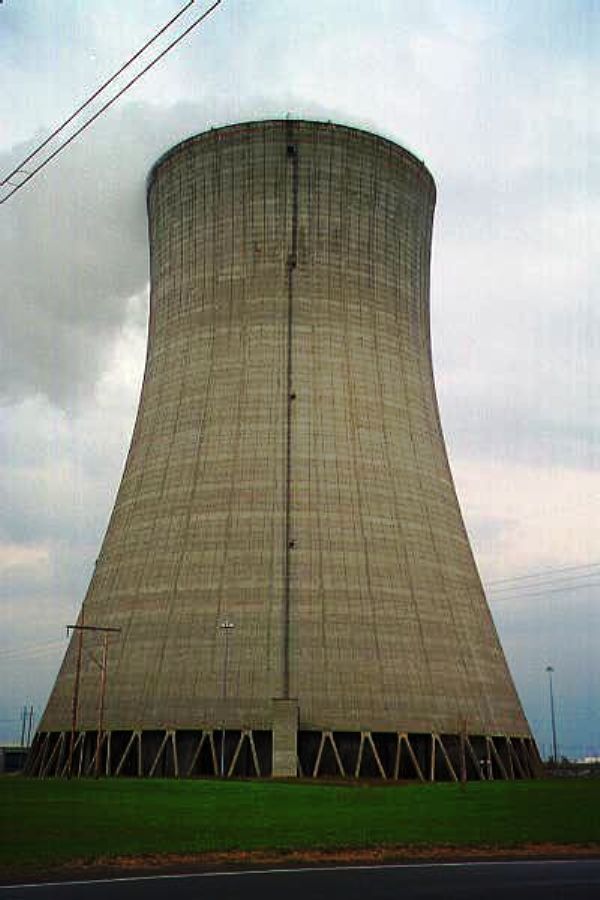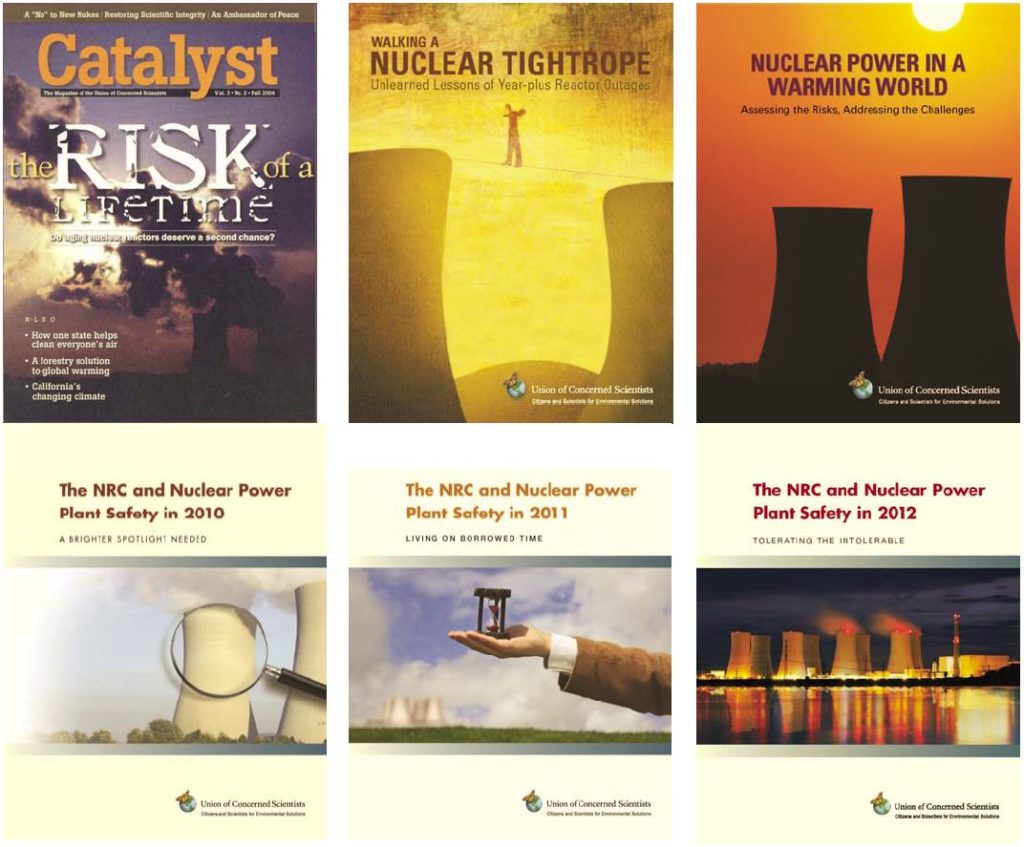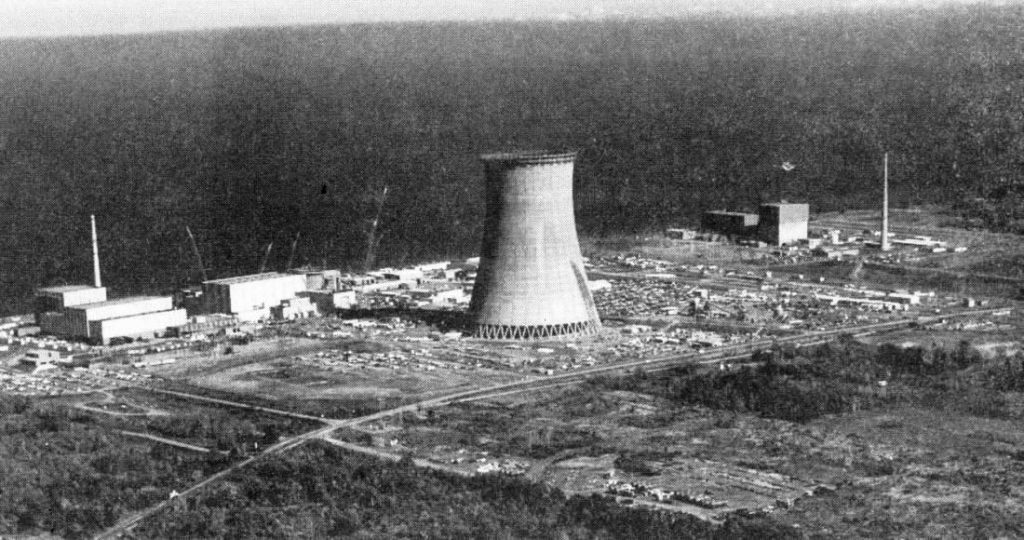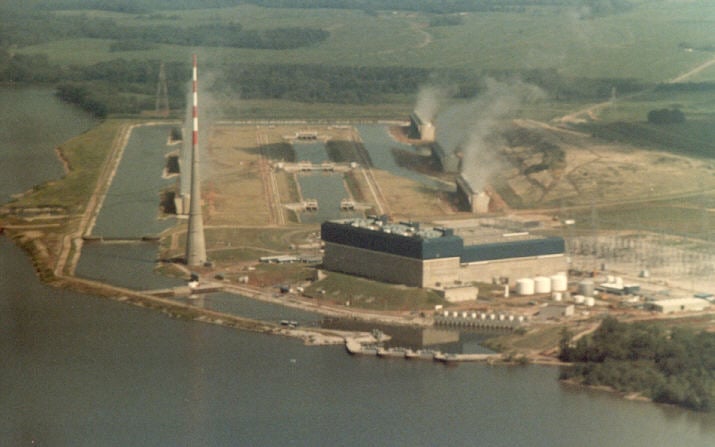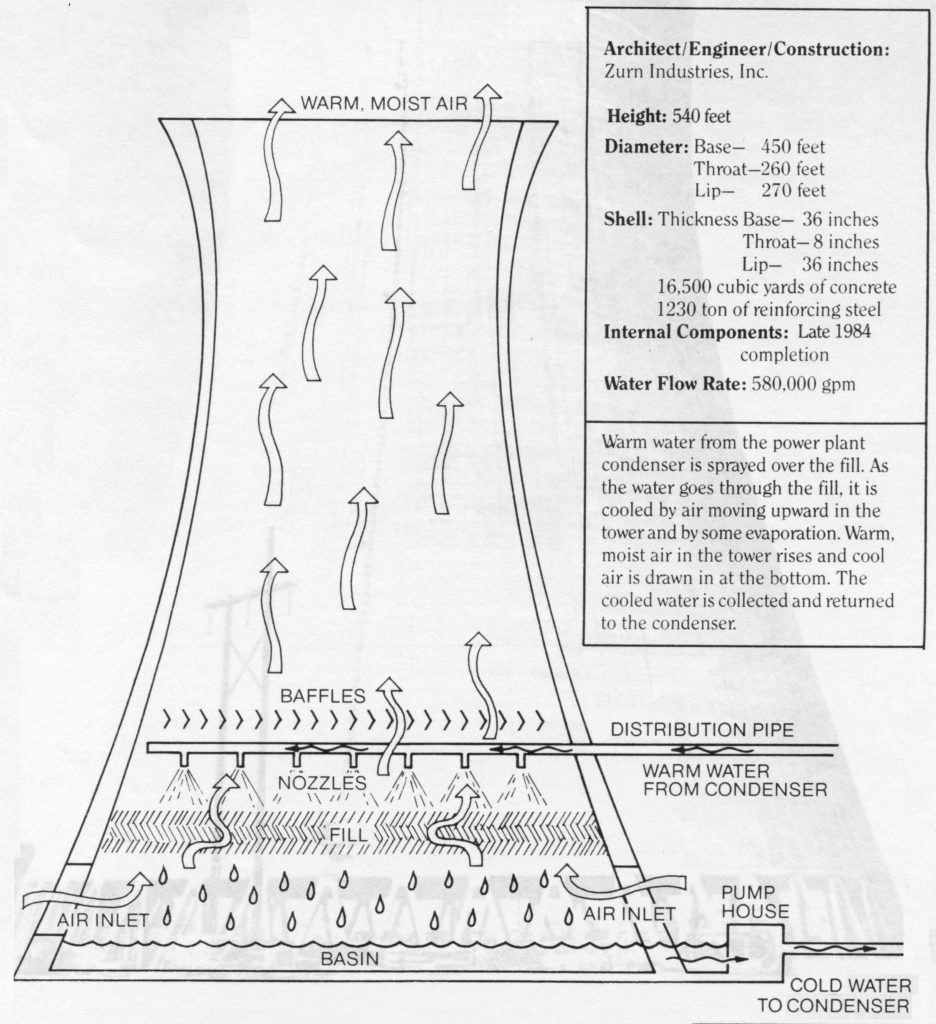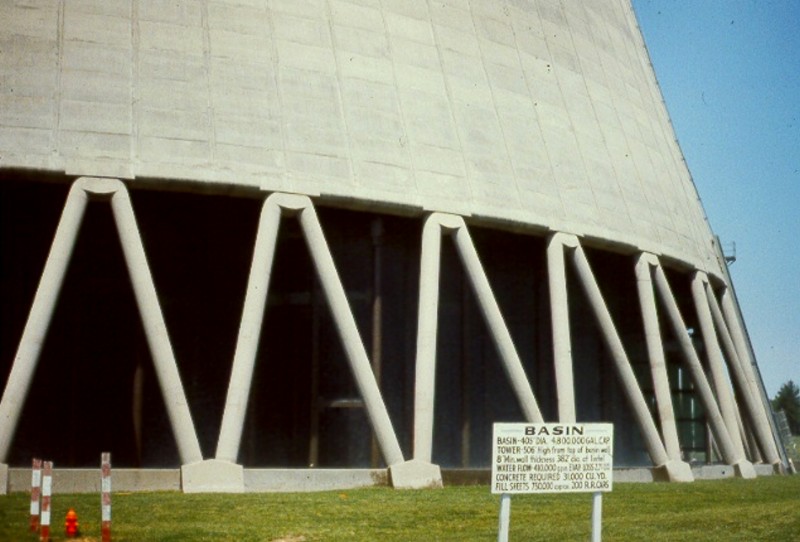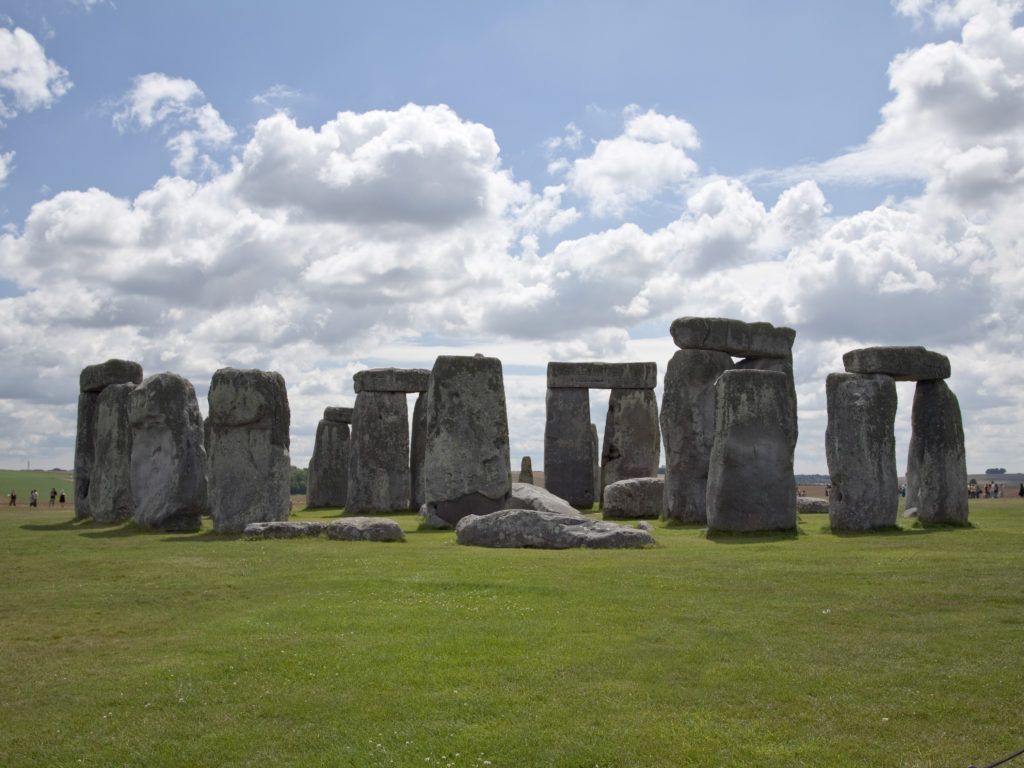Nuclear Energy Activist Toolkit #62
Go up to almost anyone on Main Street, Anytown, USA and ask them what this picture shows and the most common answer you will hear is “a nuclear plant cooling tower.”
The tall, concrete chimney emitting vapor clouds have become the iconic image for a nuclear power plant.
UCS used the iconic image a time or dozen for the covers of reports about nuclear power safety issues (Fig. 2).
It’s ironic that the image is iconic because the tall, concrete chimney is a more accurate indication of plant age than of plant type. Yes, some nuclear power plants have tall, concrete chimneys. But so do some coal-fired power plants and some oil-fired power plants.
The National Environmental Policy Act of 1969 (NEPA) required, among many other things, that power plants be designed and constructed to lessen the adverse consequences from their operation on the environment. Power plants built before NEPA did not feature cooling towers and used once-through cooling instead. Power plants permitted after NEPA typically had cooling towers to reduce the amount of water drawn from the nearby lake, river, or ocean and to also reduce the amount of thermal pollution discharged from the plants back into those bodies of water. Plants under construction at the time NEPA was enacted may or may not have added cooling towers.
Secret #1
Cooling towers indicate whether a power plant is pre-NEPA or post-NEPA.
From left to right, the aerial photograph in Fig. 3 shows the Unit 1 reactor at the Nine Mile Point nuclear plant, the Unit 2 reactor under construction at the Nine Mile Point nuclear plant, a cooling tower, and the James A. FitzPatrick nuclear plant in upstate New York.
The three reactors did not share the cooling tower—it was used only by Nine Mile Point Unit 2. The Nine Mile Point Unit 1 and FitzPatrick reactors draw water from the lake and discharge warmed water back into the lake. But Unit 2—a post-NEPA reactor—required a cooling tower to lessen the amount of water it pulled from the water and the amount of heat it returned to it.
From left to right, Fig. 4 shows the Unit 1 and 2 reactor containment buildings at the Salem nuclear plant, the reactor building for the Hope Creek nuclear plant, and a cooling tower in southwestern New Jersey. The tower belongs exclusively to Hope Creek, a post-NEPA plant. The two Salem reactors draw water from the Delaware River and discharge warmed water back into it.
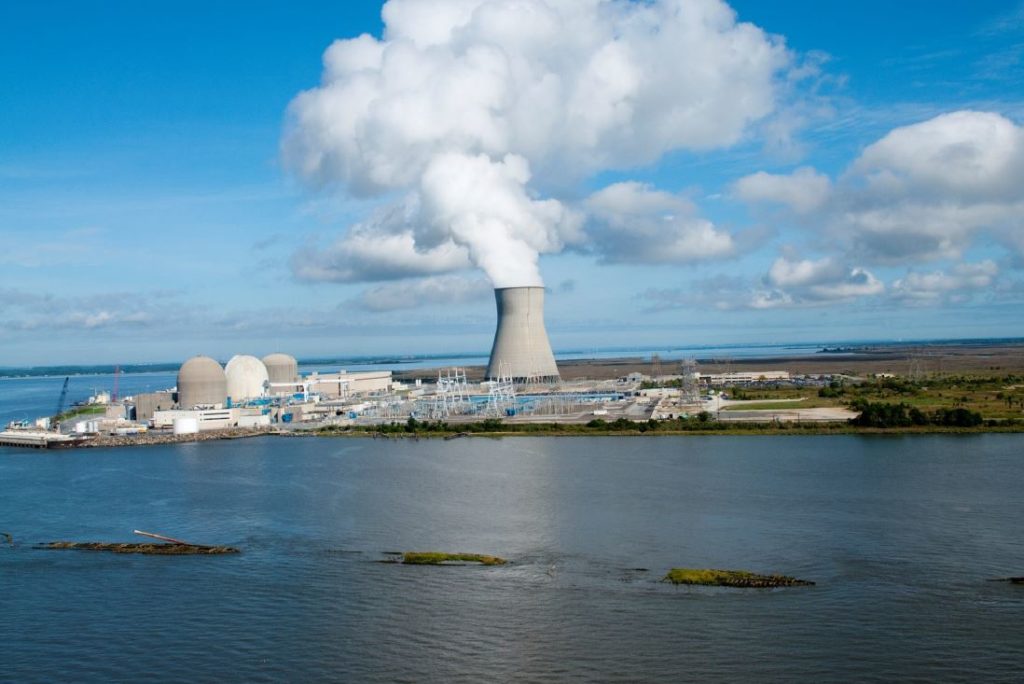
Fig. 4. (Source: PSE&G)
Secret #2
Not all cooling towers are tall, concrete chimneys.
Fig. 5 shows the three reactors of Alabama/s Browns Ferry nuclear plant in the foreground and its six mechanical-draft cooling towers in the background. Water from the Wheeler Reservoir is drawn in by the nine circulating water pumps in the lower right, sent through the plant to pick up waste heat produced by the three reactors, passed through the six cooling towers to transfer that heat to the atmosphere, and routed via the canal on the left back around to the intake structure to be re-used by the plant.
There are two cooling tower types: natural-draft (i.e., the tall, concrete chimneys) and mechanical-draft. Both types transfer heat from water to the air by different methods with the cooled water being reused by the plant.
Distribution pipes carry water that has been warmed to about 130°F in the unit’s main condenser to the natural-draft cooling tower and spray it through an array of nozzles onto fill material located about one-eighth of the way up the 500-plus feet tall tower (Fig. 6). Air enters inlets around the entire base of the tower and flows upward through the fill material. The fill material breaks up the water into as many small droplets as possible to promote contact between air and water, which in turn enhances transfer of heat from the water to the air. The warmed air rises by convection and exhausts from the top of the tower. The cooled water drops into the tower’s basin. Pumps draw water from the basin and send it back to the main condenser to sustain the cycle.
Mechanical-draft cooling towers, like this broken one at Vermont Yankee (Fig. 7), also have distribution pipes that spray warm water onto fill material for the heat transfer function. But instead of the chimney effect that natural-draft cooling towers use to move air through them, mechanical-draft cooling towers use large fans. At the base of each cylinder in the photograph is a large-diameter fan blowing air upward. Air enters the base of the tower, flows upward through the fill material, passed the fans and out the top. Cooled water drops into the tower’s basin for re-use.
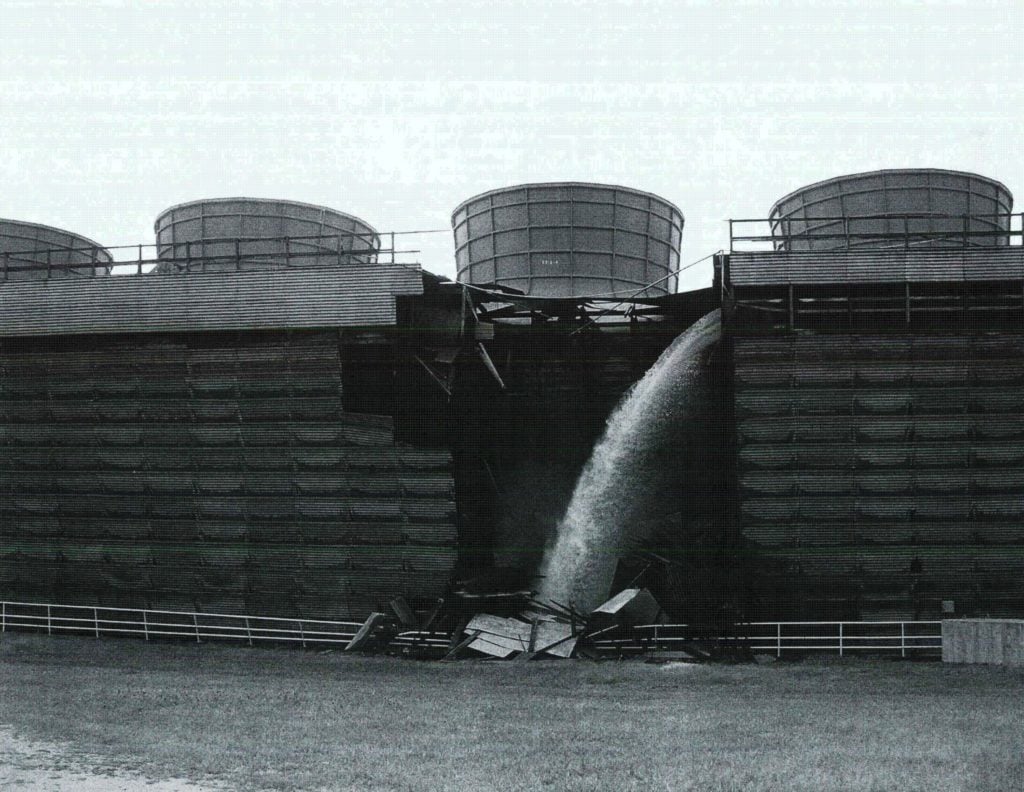
Fig. 7. (Source: Nuclear Regulatory Commission)
Secret #3
The origin of cooling towers is uncertain.
The photograph shows the stilt-like supports at the base of a natural-draft cooling tower at the Watts Bar nuclear plant in Tennessee. The stilts support the weight of the tall, concrete chimney while promoting air inlet flow.
Some scholars suspect that ancient people in Great Britain began constructing the world’s first cooling tower long ago, but abandoned the effort when an elder returning from spring break at Borchinton-on-Sea pointed out that power plants had not yet been invented. So, the ancient people left their cooling tower base to befuddle less-ancient people for centuries.
Bottom Line
Cooling towers have almost nothing to do with nuclear safety.
Cooling towers are typically found at power plants—nuclear and non-nuclear—built after the National Environmental Policy Act was enacted.
Power plants that boil steam to spin a turbine/generator are about 32 to 40 percent efficient; meaning for every 32 to 40 units of electricity put out on the transmission power lines, about 60 to 68 units of waste heat must be dissipated to the environment.
Pre-NEPA, most power plants used water—lots and lots of water—to carry away the waste heat.
Post-NEPA, most power plants used cooling towers to lessen the amount of water they consumed from the nearby lake, river, or ocean. Water is still needed (e.g., to replace the water vapor emanating from the cooling towers, but consumption rate is nearly 90 percent lower.
Cooling towers largely dissipate the waste heat from the main condensers. The main condensers at nuclear power plants have no safety role to play in preventing or mitigating accidents.
It is odd that cooling towers that are widely used at all types of power plants and that have no safety function have become iconic nuclear plant symbols.
Because luck plays a larger safety role at nuclear power plants, future covers for UCS’s nuclear safety reports should feature four-leaf clovers, rabbit’s feet, horseshoes (oriented with the opening upward to hold the luck rather than downward to let it run out), and other symbols of good fortune.
The UCS Nuclear Energy Activist Toolkit (NEAT) is a series of post intended to help citizens understand nuclear technology and the Nuclear Regulatory Commission’s processes for overseeing nuclear plant safety.

